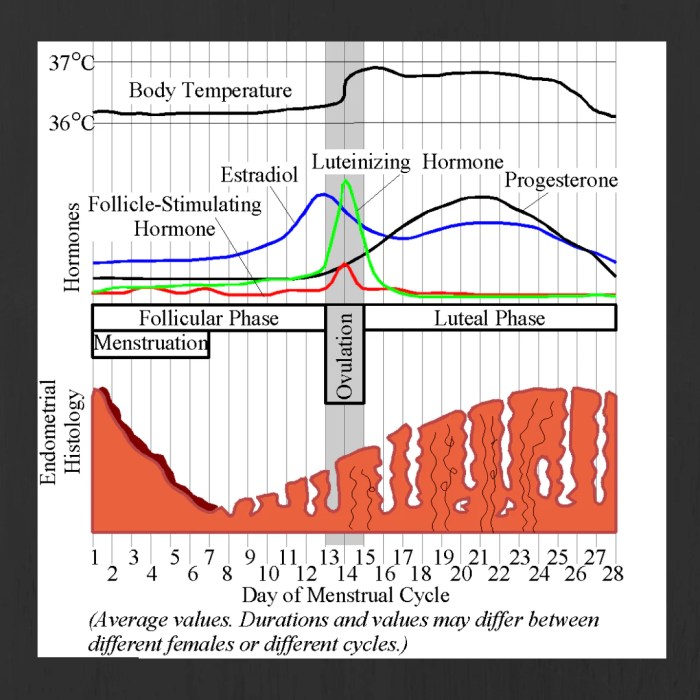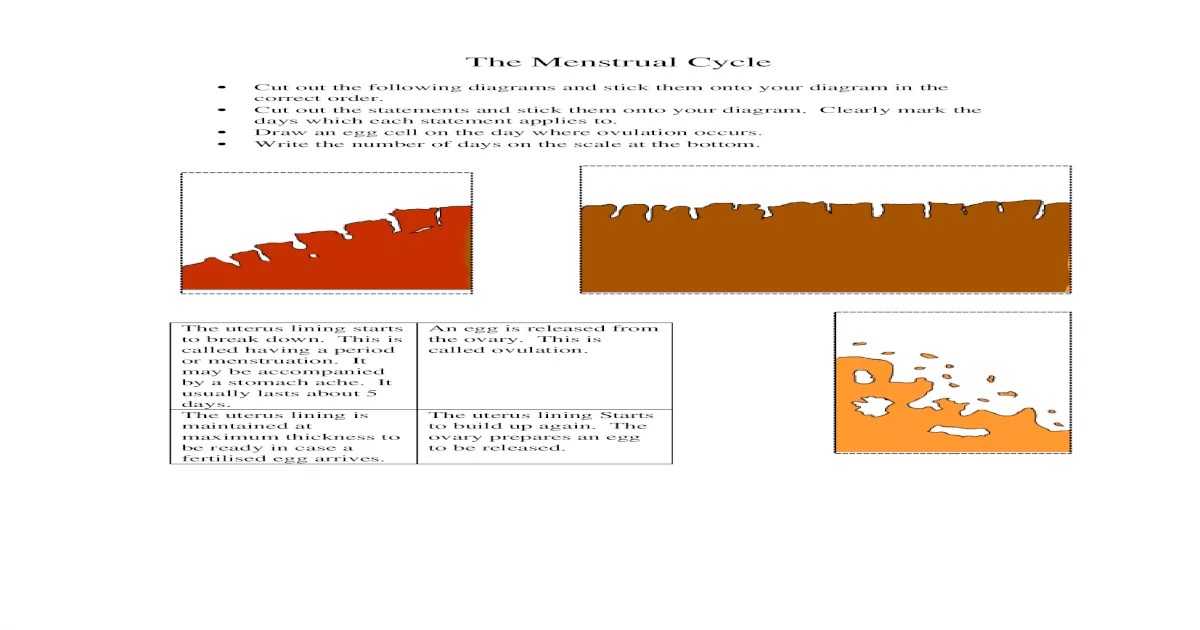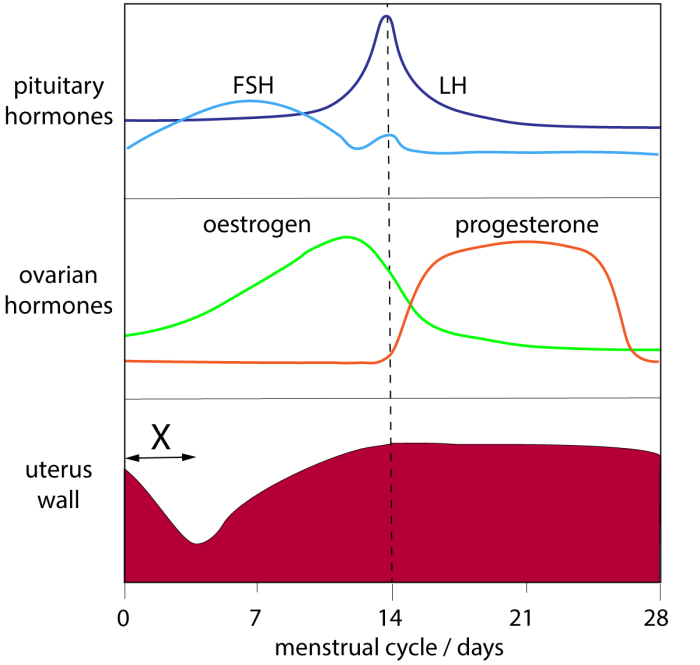The menstrual cycle graphing lab 12 answer key provides a comprehensive guide to understanding and tracking your menstrual cycle. This in-depth analysis empowers individuals to gain valuable insights into their reproductive health, fertility, and overall well-being.
Through a structured approach, the lab guides you in collecting and analyzing data to create a personalized menstrual cycle graph. This graph serves as a visual representation of your cycle’s patterns, helping you identify potential irregularities and optimize your health management.
Introduction to Menstrual Cycle Graphing Lab 12: Menstrual Cycle Graphing Lab 12 Answer Key

The menstrual cycle graphing lab is designed to provide students with a hands-on experience in tracking and analyzing their menstrual cycles. By charting their cycles over time, students can gain insights into their fertility, identify patterns, and make informed decisions about their reproductive health.
Key concepts related to menstrual cycle graphing include:
- Menstrual cycle length: The number of days from the first day of one period to the first day of the next.
- Ovulation: The release of an egg from the ovary.
- Fertile window: The time during the menstrual cycle when a woman is most likely to conceive.
The lab involves the following steps:
- Collecting data on menstrual cycle length, ovulation, and other relevant symptoms.
- Plotting the data on a graph.
- Analyzing the graph to identify patterns and trends.
- Drawing conclusions about the menstrual cycle.
Data Collection and Analysis
Data for menstrual cycle graphing can be collected using various methods, including:
- Calendar tracking: Marking the first day of each period on a calendar.
- Ovulation predictor kits: Detecting the surge in luteinizing hormone (LH) that occurs before ovulation.
- Basal body temperature charting: Tracking body temperature to identify the temperature shift that occurs after ovulation.
Once the data is collected, it can be analyzed to identify patterns and trends. For example, a woman may notice that her cycles are typically 28 days long, or that she ovulates around day 14 of her cycle. This information can be used to predict future cycles and to make informed decisions about fertility.
Creating a Menstrual Cycle Graph, Menstrual cycle graphing lab 12 answer key
A menstrual cycle graph is a visual representation of the data collected during the menstrual cycle. There are different types of graphs that can be used, including:
- Line graph: A graph that shows the changes in a variable over time.
- Bar graph: A graph that shows the frequency of different values.
- Scatter plot: A graph that shows the relationship between two variables.
When creating a menstrual cycle graph, it is important to label the axes and to include a legend. The graph should be easy to read and interpret.
Factors Affecting the Menstrual Cycle
The menstrual cycle can be affected by a variety of factors, including:
- Age: The menstrual cycle typically becomes shorter and more regular with age.
- Lifestyle: Factors such as stress, diet, and exercise can affect the menstrual cycle.
- Medical conditions: Certain medical conditions, such as polycystic ovary syndrome (PCOS), can affect the menstrual cycle.
- Medications: Some medications, such as birth control pills, can affect the menstrual cycle.
It is important to be aware of the factors that can affect the menstrual cycle so that you can interpret your graph accurately.
Applications of Menstrual Cycle Graphing
Menstrual cycle graphing has a variety of practical applications, including:
- Fertility planning: Menstrual cycle graphing can be used to identify the fertile window and to plan for conception.
- Contraception: Menstrual cycle graphing can be used to avoid pregnancy by identifying the infertile window.
- Health monitoring: Menstrual cycle graphing can be used to track changes in the menstrual cycle that may indicate a health problem.
Menstrual cycle graphing is a valuable tool that can be used to gain insights into reproductive health. By tracking and analyzing your menstrual cycles, you can make informed decisions about your fertility and health.
Commonly Asked Questions
What is the purpose of menstrual cycle graphing?
Menstrual cycle graphing helps individuals track and understand their menstrual cycle patterns, identify potential irregularities, and optimize their health management.
How do I create a menstrual cycle graph?
The lab provides step-by-step instructions on collecting data and creating a personalized menstrual cycle graph.
What factors can affect my menstrual cycle?
Various factors such as stress, diet, exercise, and hormonal imbalances can influence the length, regularity, and symptoms of the menstrual cycle.


